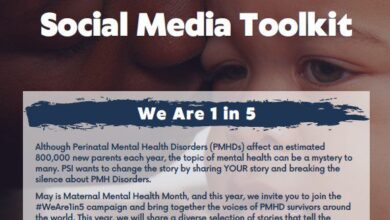Can I Get Pregnant While Breastfeeding? Exploring Fertility and Contraceptive Options

Breastfeeding can be a great way to care for your newborn while providing many health benefits for both mother and child. However, many new mothers wonder if breastfeeding can act as a contraceptive.
In this blog post, we’ll take a look pregnancy while breastfeedingexploring factors influencing fertility during lactation, and discussion effective contraceptive options for those who wish to avoid pregnancy while breastfeeding.
If you’re wondering, “Can I get pregnant while breastfeeding?” The short answer is: yes, you can.
Let’s take a deeper look at why and how this happens, including some overviews of lactational amenorrhea, non-hormonal birth control options, factors that influence breastfeeding fertility, and more.
Understanding lactational amenorrhea
Lactational amenorrhea refers to the temporary absence of menstruation because of breastfeeding.
This happens because breastfeeding triggers the release of a hormone called prolactinwhich inhibits the production of another hormone known as gonadotropin-releasing hormone (GnRH). GnRH is responsible for stimulates the release of eggs from the ovaries, leading to menstruation.
While lactational amenorrhea can give some level of natural contraception, it is not foolproof.
It mainly works when conditions are met, including:
- Exclusive breastfeeding
- Frequent breastfeeding (all day and night)
- Absence of menstruation since childbirth
These factors together prevent ovulation and reduce the possibility of pregnancy but do not prevent it completely.


Factors influencing fertility during lactation
It is important to note that the effectiveness of breastfeeding as a method of contraception varies from woman to woman.
Many factors influence fertility during lactation, including:
1. Frequency and exclusivity of breastfeeding
Frequent breastfeeding during the day and night is important in maintaining lactational amenorrhea. Breastfeeding every 2-3 hours, including at least one or two feedings at night, helps ensure continued suppression of ovulation.
2. Timing and duration of feeding
Prolactin levels are highest during nighttime and prolonged nursing sessions. Therefore, feeding on demand and allowing your baby to breastfeed as long as they want can enhance the contraceptive effect.
3. Introduction of complementary foods
As you begin to introduce solid foods into your baby’s diet, this may encourage ovulation as you decrease feeds in favor of solids.
The introduction of solids, along with breastfeeding, reduces effectiveness of lactational amenorrhea as a contraceptive method.
4. Return of menstruation
Menstruation may resume before the baby takes complementary foods or sleeps through the night. Once menstruation returns, fertility is restored, and the the possibility of getting pregnant increases.


Contraceptive options while breastfeeding
If you want to avoid pregnancy as much as possible while breastfeeding, it is advisable to do so consider additional contraceptives way.
Here are some safe and effective options:
1. Barrier methods
Condoms, diaphragms, and cervical caps are reliable contraceptive options do not affect breastfeeding or milk production.
2. Progestin-only contraceptives
This includes progestin-only pills, hormonal implants, and hormonal IUDs. Progestin-based contraceptives are considered safe during breastfeeding, as they do not affect milk production or quality.
3. Non-hormonal intrauterine devices (IUDs)
Copper IUDs are a great option for breastfeeding mothers. They are highly effective, non-hormonal, and has no effect on breast milk.
4. Natural method of family planning
Methods based on fertility awareness, such as monitoring basal body temperature and cervical mucus, can help determine fertile periods. However, these methods require diligence and may not be as reliable as other contraceptive options.
Additional thoughts on pregnancy prevention while breastfeeding
While breastfeeding can suppress ovulation and act as a natural contraceptive, it’s not foolproof.
Factors such as the frequency and exclusivity of breastfeeding, timing and duration of feeding, the introduction of complementary foods, and the return of menstruation can affect the effectiveness of lactational amenorrhea as a contraceptive method.
It is advisable consider additional contraceptive options to ensure reliable contraception during breastfeeding.
Barrier methods, progestin-only contraceptives, non-hormonal IUDs, and natural family planning methods are great options for breastfeeding moms who want to make sure they don’t get pregnant while breastfeeding.
These methods offer effective contraception while having minimal side effects on breastfeeding and breast milk quality.
It is important to consult your health care provider to determine the most appropriate contraceptive option based on your circumstances, medical history, and personal preferences.
Every woman’s body and breastfeeding journey is unique, and fertility may vary. Being aware and taking active steps to prevent pregnancy as long as you want can empower you to make the best decisions for yourself and your family.


Final thoughts on breastfeeding and pregnancy
In conclusion, while possible to get pregnant while breastfeedingthe effectiveness of lactational amenorrhea as a contraceptive method depends on several factors.
Additional contraceptive options along with exclusive breastfeeding can provide a higher level of pregnancy prevention.
By understanding the interplay between breastfeeding, fertility, and contraception, you can confidently make smart choices that align with your reproductive goals while nurturing your baby through a wonderful breastfeeding journey.






